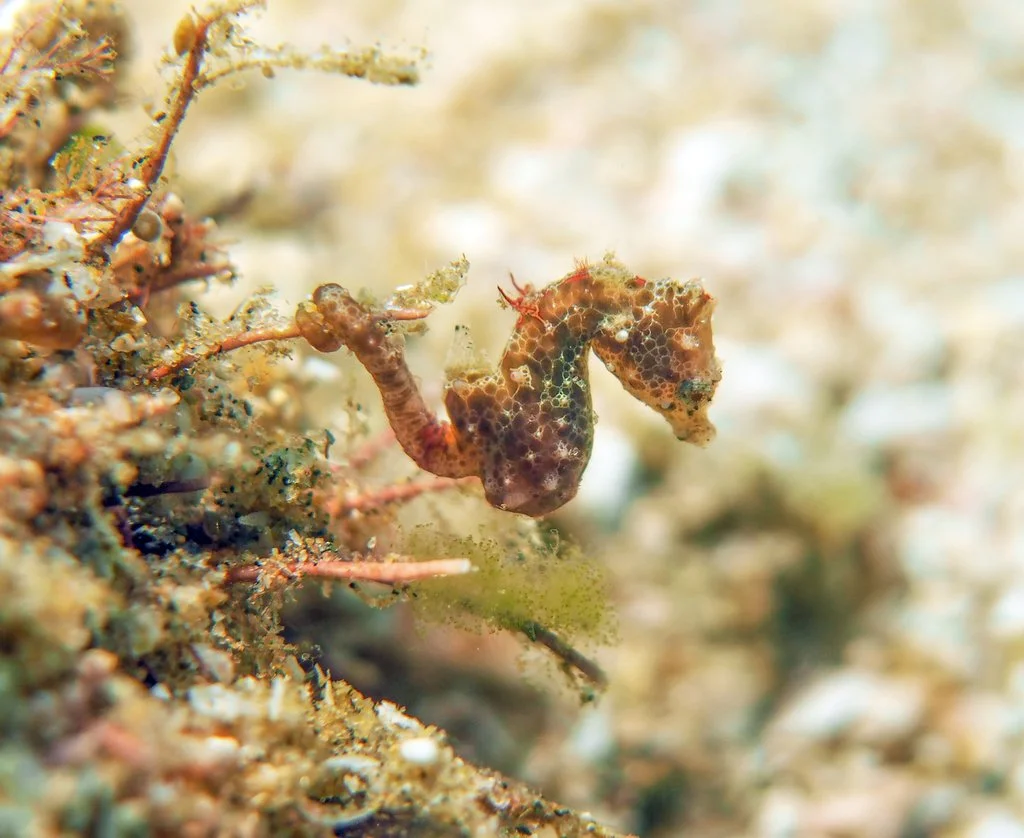IUCN World Conservation Congress Resolution 95
Conservation of seahorses, pipefishes & seadragons (family Syngnathidae)
Partner with the IUCN SSC Seahorse, Pipefish & Seadragon Specialist Group to conserve these magical fishes, for their own sake and as icons for marine conservation in general.
Help us make IUCN Resolution 95 come alive!
To view the resolution in its entirety click here for English, French and Spanish versions.
Red pipefish (Festucalex rufus). Photo by Richard Smith / Ocean Realm Images.com
Why take action for these magical fishes
The more than 300 of species in the family Syngnathidae exhibit remarkable life histories, including parental care through to full male pregnancies
They are found globally from tropical to subarctic regions in freshwater, transitional/estuarine waters and coastal seas
Syngnathids are iconic flagship species, help structure communities, are ascribed medicinal and cultural value, and can be economically important for fishers and traders
Human activity and climate change are causing widespread degradation and destruction of syngnathids’ freshwater, transitional and coastal habitats (e.g. estuaries, coral reefs, mangroves, seagrass beds)
Tens of millions of syngnathids are traded annually in over 80 countries for traditional medicines, dried seafood, aquarium displays and curiosities
Syngnathids are extracted by bottom trawls and other non-selective gear at unsustainable levels
We are seeing large declines in seahorse catch in both industrial and small-scale fisheries
A total of 113 syngnathid species are considered Threatened, Near Threatened or Data Deficient on the IUCN Red List of Threatened Species
Of particular concern are the seahorses (Hippocampus spp.) and freshwater pipefishes
The Convention on International Trade in Endangered Species of Wild Fauna and Flora (CITES) lists seahorses on Appendix II, requiring that exports be restricted to levels that are not detrimental to wild populations and are legally sourced
CITES approved Decisions at the 18th Meeting of the Conference Parties to strengthen support for seahorses
With vast illegal exports of dried seahorses, many CITES Parties face difficulties in meeting their obligations
In order to be effective, controls on capture and export of syngnathids must be accompanied by constraints on non-selective fishing gear
Aquaculture ventures for syngnathids often add to pressures on their wild populations
There are concerns that syngnathids are released from captive populations or translocated haphazardly, without plans or monitoring
Leafy seadragon (Phycodurus eques). Photo © Gaetano Gargiulo / Guylian Seahorses of the World
How can you help?
Encourage IUCN members, State and Government Agencies to meet their responsibilities
IUCN
Use iconic syngnathids to promote action on broad ocean issues, including climate change
Contribute to public databases on syngnathids, particularly iNaturalist and iSeahorse
IUCN Members, especially State and Government Agency Members
Take note that the Species Survival Commission (SSC) Seahorse, Pipefish & Seadragon Specialist Group can provide assistance on how to conserve syngnathids
By 2022, ensure the status of all syngnathids is assessed and included in national/regional Red Lists as warranted
Support the work of the Seahorse, Pipefish & Seadragon Specialist Group in keeping assessments of all syngnathids up to date
Ensure that initiatives to combat Illegal Wildlife Trade (including e-commerce) include syngnathids, as appropriate
By 2021, for any release, apply SSC guidelines for reintroductions and translocations
Protect and restore freshwater, transitional and coastal habitats that are important for syngnathid species, using best practices
IUCN State and Government Agency Members
Enforce regulations on fisheries, area-based management, habitat protection, wildlife trade and other measures that affect syngnathids
Meet all CITES obligations for seahorses
Measurably reduce impacts of non-selective fisheries on syngnathids
Ensure that fisheries programmes and subsidies do not threaten syngnathids
By 2021, restrict syngnathid culture to operations that have been subject to an appropriate/careful risk analysis prior to proceeding, and where results have concluded that is is reasonable/safe to continue
We thank the Principality of Monaco for its leadership on this Resolution.
Banner image of Sodwana pygmy seahorse (H. nalu) © Pedro Ferreira / Guylian SOTW
[Page updated April 2020]



